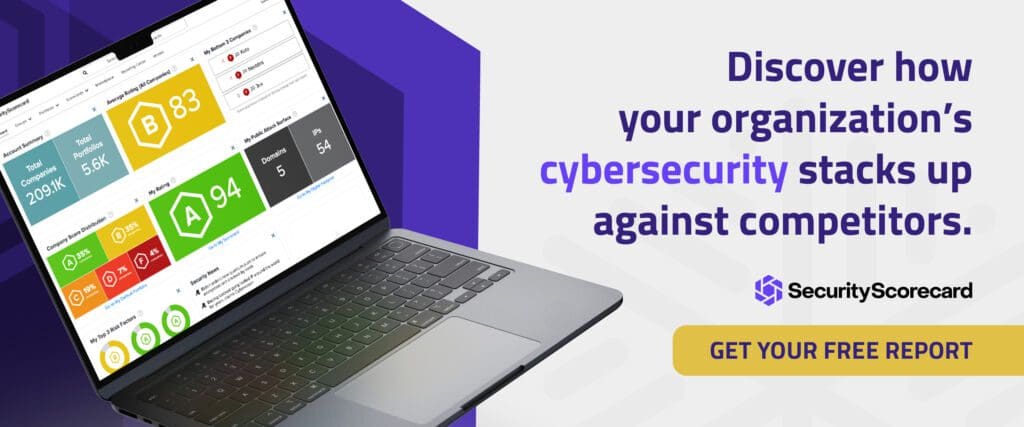8 Best Practices for Securing the Internet of Things (IoT)
-
June 27, 202510 Cybersecurity Criteria for Smarter Vendor Selection
-
November 25, 20242025 Security Predictions: The Forces Reshaping Cybersecurity
-
January 2, 202420 Cybersecurity Metrics & KPIs to Track in 2025
-
August 16, 202110 Best Practices to Prevent DDoS Attacks
-
April 7, 202110 Tips for Setting Cybersecurity Goals for Your Business
While the Internet of Things (IoT) can provide helpful insights, it can also introduce a host of new security vulnerabilities into your organization. Without a clear understanding of the importance of IoT security, your organization will continue to introduce new vulnerabilities without even realizing it.
Let’s take a closer look at how IoT security is important and the best practices your organization can use to improve the overall security of your organization.
Why is IoT security important?
From smart home appliances to driverless trucks, the Internet of Things (IoT) makes up an extensive list of connected devices within a network. And while cybercriminals used to only target computers or smartphones for personal or sensitive data, new IoT threats target anything that interacts online.
For example, if a cybercriminal successfully hacks into a smart vehicle, they may have the ability to disable security features or driving functions. If a cybercriminal breaches a medical device, such as a heart monitor, they may have the ability to disrupt communication to and from the internet, causing the device to malfunction and put lives at risk.
It’s now more important than ever to properly secure the IoT to ensure your sensitive data, appliances, and well-being are protected at all costs.
8 Best practices to improve your IoT security
Securing the IoT infrastructure is critical, but it requires a robust strategy to effectively secure data in the cloud and protect data integrity in transit.
Here are some of the best practices to improve IoT security for your organization.
1. Track and manage your devices
It can be difficult to manage devices across an organization without learning how each device works and what they do. Having an understanding of connected devices within your organization is the first step to securing the IoT infrastructure. To best manage devices, consider implementing continuous monitoring software that helps monitor, discover, track, and manage devices to best secure your organization from future attacks.
2. Consider patching and remediation efforts
Patching and remediation involve changing the code of connected devices over time to ensure optimal security. Before implementing a networked device, organizations must consider if the device can be patched over time to combat the ever-changing threat landscape. Some devices are limited in their capabilities, or are too complex to comprehensively patch. Therefore, remediation must be considered well before implementing a new IoT device into your network.
3. Update passwords and credentials
Although updating passwords may seem like an outdated best practice, many devices that are shipped out have a vendor-supplied default password. Cybercriminals can easily access these passwords and exploit or gain control of these devices. Maintaining good password hygiene by updating passwords and credentials is an important step that should be managed routinely to ensure your devices are secure at all times.
4. Use up-to-date encryption protocols
Unencrypted data allows cybercriminals to obtain sensitive information or even listen to network communications. To effectively protect against IoT threats, organizations need to encrypt all data within a network. Establishing up-to-date encryption protocols for all data makes any data within the network illegible for unauthorized users, and therefore, more secure.
5. Conduct penetration testing or evaluation
Connected devices are innately vulnerable since they are manufactured with ease of use and connectivity at top of mind. Organizations must perform some kind of evaluation or penetration testing on the hardware, software, and other equipment of their business before deploying IoT devices. Penetration testing helps identify and understand vulnerabilities, as well as test security policies, regulatory compliance, employee security awareness, risk response, and more. Conducting a pen test before IoT devices are deployed can prevent your organization from serious IoT threats in the future.
6. Understanding your endpoints
Every time a new IoT device is connected, a new endpoint is introduced into the network. Endpoints can be introduced by connecting new laptops, smartphones, cloud-based servers, printers, etc. — and with each endpoint, a potential entry point for cybercriminals is created.
Many organizations struggle with effective endpoint security since the amount of devices connected to corporate networks is constantly increasing, and it can become hard to control every single device in the network. Organizations must understand, identify, and profile their IoT endpoints to establish a secure and healthy network. To best understand and improve endpoint security, organizations can leverage endpoint security tools that provide anti-virus software, mobile device management, security patch updates, data encryption, and more.
7. Segment your network
When integrating IoT devices into your network, it’s best to anticipate that your devices will likely be hacked. That way, you can be well-equipped and prepared in case of an actual breach. Leveraging network segmentation can help prepare your organization in the event of a cyberattack by splitting computer networks into a series of sub-networks. Segmentation empowers you to combat unauthorized users from one sub-network before they have a chance to infect another. In addition, this can help you minimize points of access to sensitive data for applications within the segmented areas.
8. Use multi-factor authentication
Multi-factor authentication is a step beyond traditional two-factor authentication. Multi-factor authentication requires users to provide two or more verification factors before gaining access to a resource. With this form of authentication, users will only be able to access an IoT device if they have successfully completed each aspect of authentication — thus improving the overall security of your IoT network and adding an extra layer of protection against a cyberattack.
How SecurityScorecard’s Security Ratings can help
As digital technology and connected devices expand, so does the need for a robust monitoring and security system. SecurityScorecard’s Security Ratings offer businesses the ability to continuously monitor their devices, applications, and networks to detect inherent and new risks or vulnerabilities.
Managing cybersecurity is critical in adopting an IoT interface. With SecurityScorecard Security Ratings, organizations gain important insights across their hybrid, multi-cloud, and complex IT operations, creating a secure and stable infrastructure for years to come. Request your free instant scorecard today and discover the security posture of your organization.






